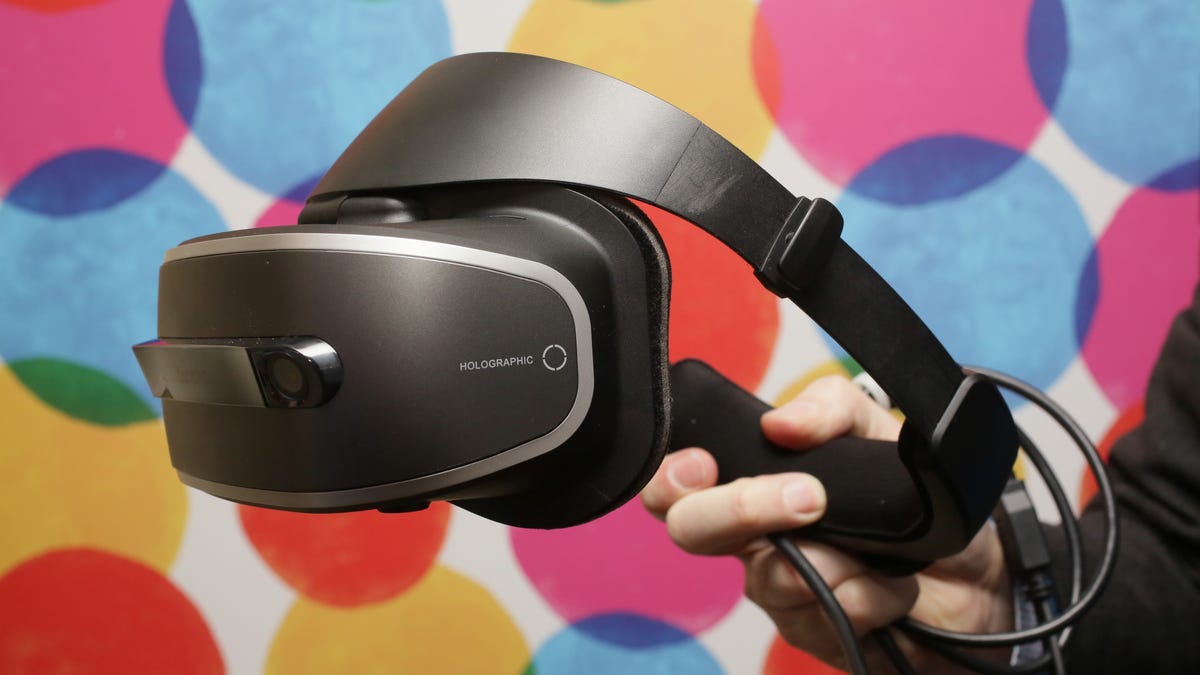Lenovo's low-cost flip-up Windows VR headset shows how work might get done in VR
Flipping between the real and virtual worlds for under $400 later this year.

You want PC VR for less than $500? You'll have PC VR for less than $500.
Microsoft's going to be a big player in VR in 2017 via its Windows Holographic software and a range of Windows-compatible VR headsets, and several partners are already showing off sneak peeks. Lenovo's VR headset is on display here in Las Vegas at CES, albeit in a nonfunctioning mockup. And it's going to cost a lot less than Oculus Rift or Vive.
The Lenovo VR headset -- it doesn't have an official name yet -- will cost less than $400 when it comes out in the second half of 2017.
But, even in a nonworking form, its design shows how Windows VR might be significantly different than the stuff you use to play games with.
Its design is far more comfortable than most VR headsets. It's significantly lighter than either the Rift or Vive headsets. Its headband design is also more glasses-friendly, much like the PlayStation VR. A flip-up front could also switching between working in VR and the real world a lot easier.
That switching ease is key, especially for Microsoft's next version of Windows 10. The VR headset has its own depth-sensing cameras on the front, similar to Microsoft's HoloLens tech, allowing for full-room movement tracking without any extra sensors. That's less desk clutter, and it will allow Lenovo's headset -- and other Windows Holographic-ready VR headsets from Dell, HP and others -- to use some HoloLens apps. Lenovo's headset can't show virtual reality graphics floating in the real world, but it could scan real-world items and put them in VR, technically making it a mixed-reality headset.
Lenovo's headset should allow for fairly high-resolution VR, according to the Chinese company, but don't necessarily expect lots of gaming. This headset won't be formally compatible with Oculus Rift or HTC Vive apps, because it uses a different style of tracking and control. Windows Holographic VR might be more for videos, work apps and creative tools. Lenovo will also offer its own hub of VR software, but those apps haven't yet been revealed.
We'll know more when these headsets finally work later this year. You can only tell so much from a nonworking prototype.

